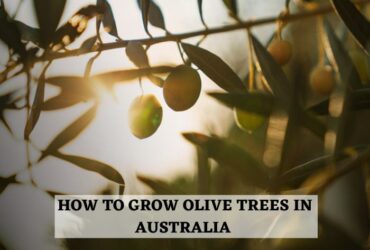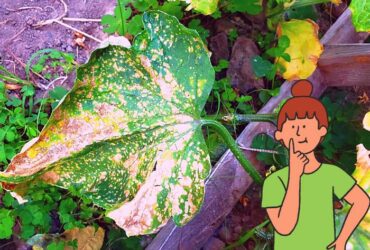Do you want to vertically grow pumpkins in a small space by turning rolled wire fencing into a pumpkin tower trellis?
Here you are!
Pumpkins’ vines usually grow very long, up to 20+ feet, so small gardeners do not consider them growing.
But this season won’t be the same. In this article, you’ll learn how you can grow these expensive big pumpkins in your small yard with a little effort.
So, let’s dive in!
MAKING PUMPKINS TOWER TO GROW PUMPKINS VERTICALLY

To make it easier for you, I have divided the process of growing pumpkins in small spaces into smaller step-by-step procedure.
Growing pumpkins is not difficult; you just need to set a proper structure for them. So they’re set to grow in good soil, absorb enough water, and have space.
So, now, let’s have your pumpkins grown by following these steps individually.
Dig A Hole
You should have 5 square feet of space to grow pumpkins in a vertical tower.
Dig a 2.5 feet diameter hole that is 1 foot deep.
Make The Pumpkin Tower Trellis
Cut the wires according to the trellis (2.5 feet diameter) for pumpkins. For this, you will need a 4 feet wire fencing.
Place the Tower In The Hole
Now, place the tower inside the whole. And fill and surround the hole with soil.
Tip: No need to pack the hole tightly with soil. Loose soil will work fine for the pumpkin seeds.
Plant Pumpkin Seeds
I know it will be the most exciting part for you all. So, finally, you can plant the seeds around the tower’s perimeter.
Water the seeds.
Yayy! Multiple vines grow out of the ground in a few days.
Train The Vines
In the beginning, the vines won’t climb themselves up. You will need to wrap them around the fencing.
Once they start climbing around the fencing, you can easily wrap the new growing vine to the fence and take a look at the progress of your pumpkins.
HELPFUL TIPS FOR GROWING PUMPKINS VERTICALLY
Growing pumpkins in small spaces can be exciting! Yet you should be careful about certain things before going for it!
Here are those useful tips that can help you a lot!
Choose Pumpkin Varieties Carefully!

Pumpkins are different based on their varieties, so they grow differently. You should choose the right pumpkin variety wisely according to your available space, climate, and seasons.
For instance, if you live somewhere the season is short, you should go for a quick maturing variety of pumpkins.
Similarly, if you have a big pumpkin tower, you can go for varieties that grow as big as 17 feet and spread around more.
For the smaller trellis for the pumpkins, you should go for semi-bush-type vines that grow up to 5 to 10 feet long.
Similarly for taste, different varieties differ in taste as well. Some are naturally sweeter than others.
If you want to grow pumpkins for baking and cooking, you should go for the sugar pie variety, which has a sweeter flavor and smooth texture.
Harvest Times Are Important!
If you’re buying seed packets for growing pumpkins in small spaces in your garden, the packet will have the pumpkins’ maturity time mentioned on it. Maturity time is from the day you sow seeds to the day you expect your pumpkin to be harvest-ready.
Remember: You should calculate that time according to your climate (non-frosting period).
For instance, if you plan to grow a variety that would take 100 days to mature, you should grow the seeds from May to June.
Pumpkins Require Sun And Space To Grow!
If you grow pumpkins seasonally, you would know that pumpkins love sun. So, growing them in full sun is just perfect!
But if you’re growing pumpkins in small spaces where they won’t get a full day sun. Make sure they get at least 6 hours of sunlight a day.
As described above, the size of the trellis for pumpkins will decide how much space the vine will acquire to grow.
Apply Water And Fertilizer Appropriately!
When you plant the seeds, add enough compost or manure to the area and dig into the soil.
This helps loosen the soil, and pumpkin roots establish easily.
Compost will also help retain moisture and nutrients that pumpkins need in greater amounts.
Pumpkins love moisture, especially during the dry seasons.
Tip: Do not apply water at the base directly; apply water in a 2-foot circle around the plant to avoid stem rot.
Also, do not apply water on the leaves directly.
Planting And Transplanting Pumpkin Plants
When you plant the seeds, they will germinate in a week.
When they reach 4 inches tall, snip off all, leaving the most robust ones.
Crowded plants won’t grow healthier, and their fruit will not get as big as it could when appropriately spaced apart.
Tip: Sow the seeds indoors and then transplant them outdoors during summer.
A drip irrigation system can be a good option for growing pumpkins long-term.
Keep An Eye On Pests And Disease
Pumpkins need pollinators to set fruit, so don’t use insecticides to avoid bees.
Pick off squash bugs and their golden eggs that may appear on the underside of the leaves.
Avoid powdery mildew with sulfur dust or spray.
Harvest Pumpkins Carefully!

Usually, pumpkins are ready for pickup at the end of summer when their vines start dying.
Their skin color develops fully, and the stem becomes dark green. Poke it with your fingernail; it will spring right back.
To make the harvest live longer, do not cut off the pumpkin from the end of the stem. Instead, leave a bit and lift the pumpkin from the bottom.
Another tip for storing your pumpkins for longer is to wash the outside with a 1 to 2% solution of bleach and water (you can make it by adding one to two parts of bleach to eight to nine parts of water).
Keep the clean, dry pumpkins in your garage until you use them.
WRAP UP!
This article covers the step-by-step guide to growing pumpkins in small spaces. If you do not have a big garden space but want to enjoy pumpkins, you can grow them vertically in a pumpkin tower.
There are a few things you should keep in mind while growing pumpkins.
The first one is to choose the pumpkin variety carefully, sow seeds indoors, and then transplant them outdoors during summer.
Pumpkins love sun and moisture, so ensure the space gets sunlight for at least 6 hours a day.
Apply enough manure and fertilizer to keep your pumpkin vines healthy.
Last, keep an eye on pests and diseases and treat them timely.
Have you got more questions? Here are the answers to the most frequently asked questions.
FREQUENTLY ASKED QUESTIONS
What Is The Best Time To Plant Pumpkin Seeds?
Ensure the temperatures are above 70 degrees and no frost when planting the seeds.
How Long Does It Take To Grow Pumpkins?
To fully mature, pumpkins take 90 to 120 days to become harvest-ready. After sowing seeds, you’ll see the plants coming up in a week or so (depending on the weather conditions in your area).
How Many Pumpkins Grow Per Plant?
It depends on various factors, including temperature, pests and diseases, and available male and female flowers and pollinators. Usually, one pumpkin vine can produce anywhere between 0 to 5 pumpkins.
How Much Space Do Pumpkins Need?
Spacing pumpkin plants 2 to 5 feet apart is ideal. But you can grow several varieties by growing pumpkins vertically.
Is Growing Pumpkins In Containers Possible?
Yes, you can grow pumpkins in containers as well. Select the right container, prepare it, and select the right variety to grow.
Follow @kitchenandgardening for more!














Leave a Reply